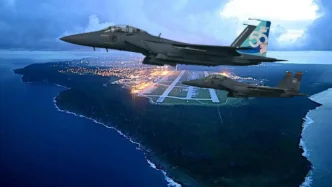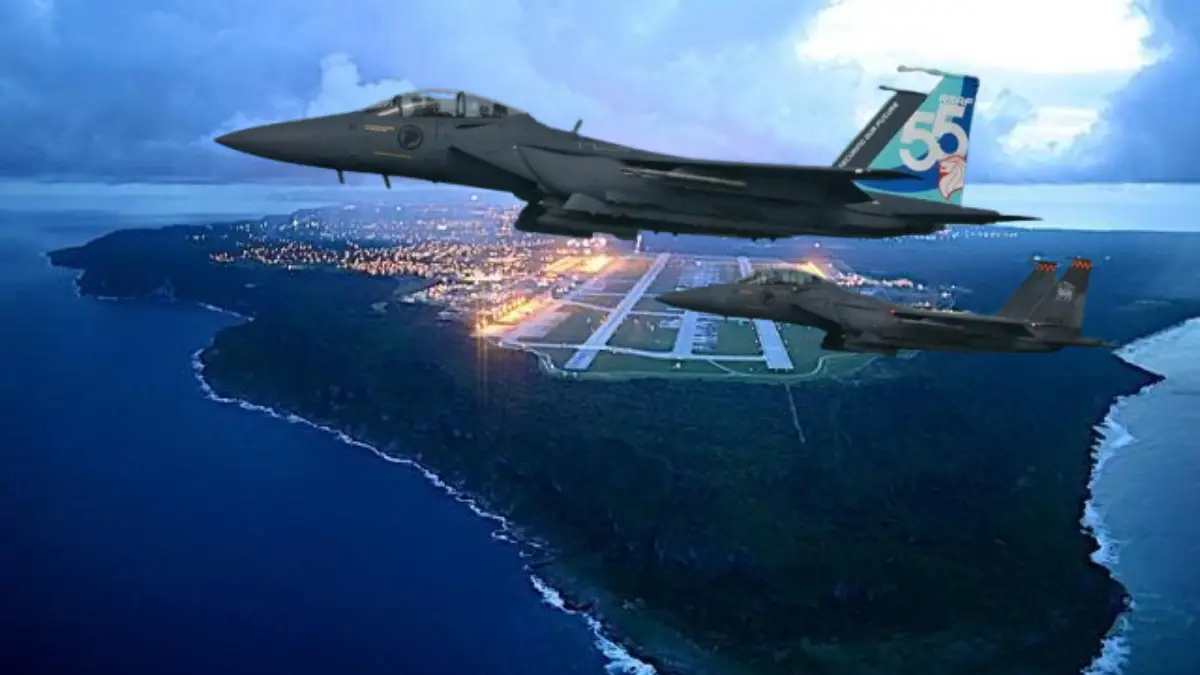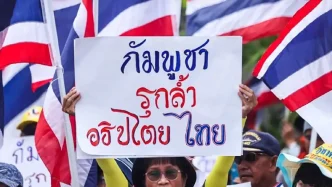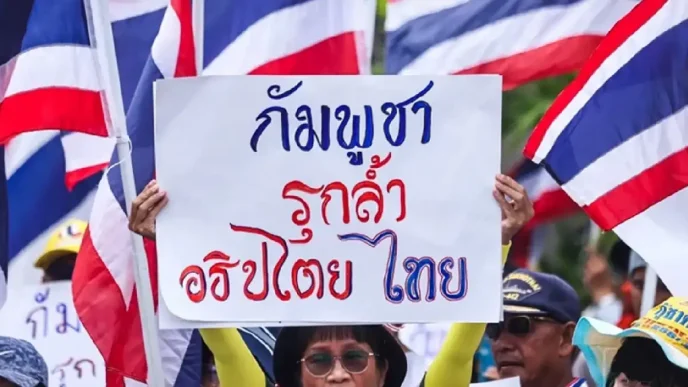Singapore and the United States have mutually agreed to abandon a plan to station a dozen Republic of Singapore Air Force (RSAF) F-15SG fighter jets at Andersen Air Force Base in Guam, marking a significant shift in the city-state’s military training strategy in the Pacific. The decision, announced by Singapore’s Ministry of Defence (MINDEF) on August 12, 2025, follows a comprehensive review of training needs and environmental considerations on the US side. While the long-term basing plan has been shelved, both nations reaffirmed their strong defense ties, with alternative training arrangements already in motion.
A Strategic Pivot in Military Training
The original plan to base RSAF F-15SG jets in Guam was first unveiled in 2023, building on a 2019 memorandum of understanding between MINDEF and the US Department of Defense (DoD). The arrangement was intended to establish a fighter training detachment at Andersen Air Force Base, a key US military installation in the western Pacific. This would have been the fourth RSAF detachment on US soil and the closest to Singapore geographically, allowing for rapid redeployment of assets back to the city-state if needed.
MINDEF stated that the decision to discontinue discussions was reached after a joint assessment of the RSAF’s operational requirements. “Following a review of the RSAF’s training needs, MINDEF and the US Department of Defense mutually agreed to discontinue discussions on an RSAF fighter training detachment in Guam” the ministry announced. However, this does not signal a complete withdrawal from the region’s training opportunities. The RSAF will continue periodic short-term exercises in Guam, with a fighter training detachment scheduled for October to November 2025.
On the US side, the Department of the Air Force (DAF) cited environmental impact studies as a key factor in the cancellation. A record of decision document, signed by Acting Assistant Secretary of the Air Force Michael Saunders on July 16, 2025, confirmed that the DAF would not proceed with hosting up to 12 RSAF F-15 aircraft at Andersen Air Force Base. The document highlighted a thorough evaluation of potential environmental consequences, alongside national defense priorities such as mission support, infrastructure, and capacity. Plans for constructing new munition storage facilities at the base were also scrapped, with the DAF emphasizing its commitment to minimizing environmental harm.
Environmental Concerns and Strategic Realignment
The environmental considerations cited by the US DAF underscore a growing tension between military expansion and ecological preservation, particularly in sensitive regions like Guam. Andersen Air Force Base, located on the island’s northern tip, is surrounded by delicate ecosystems and local communities that have long voiced concerns over the impact of military activities. The decision to halt infrastructure development for the RSAF detachment reflects a broader US policy of balancing strategic interests with environmental stewardship, especially in the Pacific where climate change and biodiversity loss are pressing issues.
For Singapore, the cancellation represents a pragmatic pivot rather than a setback. The city-state, with its limited land and airspace, relies heavily on overseas training detachments to maintain the operational readiness of its air force. The RSAF has a long history of training in Guam, dating back to the 1990s, often deploying fighter aircraft alongside the US Pacific Air Force for joint exercises. While a permanent detachment would have offered logistical advantages, MINDEF’s focus appears to be shifting toward more flexible, short-term arrangements that can adapt to evolving needs.
Moreover, Singapore is already exploring new avenues for collaboration with the US. MINDEF revealed that discussions are underway for a fighter training detachment at Ebbing Air National Guard Base in Fort Smith, Arkansas. This facility is set to host the RSAF’s future F-35 fighter training, signaling a deeper investment in next-generation capabilities. The F-35, a fifth-generation stealth fighter, is a cornerstone of Singapore’s military modernization efforts, and training in the US will provide access to advanced facilities and expertise unavailable domestically.
Bilateral Defense Ties Remain Robust
Despite the shelving of the Guam plan, both Singapore and the US were quick to emphasize the strength of their defense partnership. “Singapore and the US have excellent and long-standing bilateral defence cooperation” MINDEF stated, expressing gratitude for the US DoD’s continued support of RSAF training detachments. These arrangements are critical for honing the air force’s operational capabilities, ensuring that Singapore can project power and respond to regional contingencies despite its small size.
The relationship between the two nations extends beyond training agreements. Singapore is a key non-NATO ally of the US in Southeast Asia, playing a pivotal role in maintaining stability in a region marked by geopolitical tensions, particularly in the South China Sea. The city-state’s strategic location at the crossroads of major shipping lanes, combined with its advanced military capabilities, makes it an indispensable partner for Washington as it seeks to counterbalance China’s growing influence in the Indo-Pacific.
Joint military exercises, intelligence sharing, and high-level defense dialogues have long characterized this partnership. The RSAF’s training detachments in the US—currently based in locations such as Arizona and Idaho—provide not only operational benefits but also opportunities for interoperability with American forces. The upcoming short-term deployment to Guam later in 2025 will likely serve as a testing ground for maintaining this synergy, even without a permanent base.
Geopolitical Implications in the Indo-Pacific
The decision to abandon the Guam detachment comes at a time of heightened strategic competition in the Indo-Pacific. Guam, often referred to as the tip of the spear for US military presence in the region, hosts critical assets for power projection across Asia. A permanent RSAF presence there would have symbolized a deepening alignment between Singapore and the US, potentially drawing scrutiny from regional powers wary of Western military expansion.
While environmental concerns were the stated reason for the US DAF’s decision, some analysts speculate that geopolitical sensitivities may have played a role. Singapore, despite its close ties with the US, maintains a delicate balancing act in its foreign policy, avoiding overt alignment with any single power bloc. A fighter jet detachment in Guam, so close to contested areas like the South China Sea, could have been perceived as a provocative move by neighboring countries or even by China, which has repeatedly expressed concern over foreign military presence in the region.
By shifting focus to short-term exercises and alternative locations like Arkansas, Singapore may be seeking to preserve its strategic autonomy while still benefiting from US cooperation. This approach allows the city-state to enhance its military capabilities without becoming entangled in the broader US-China rivalry—a dynamic that continues to shape security architectures across Southeast Asia.
Looking Ahead: Flexibility in Defense Planning
The cancellation of the Guam detachment highlights the complexities of modern military partnerships, where environmental, logistical, and geopolitical factors must be carefully weighed. For Singapore, the decision underscores the importance of adaptability in defense planning. The RSAF’s ability to pivot to alternative training arrangements—whether in Guam on a temporary basis or in Arkansas for the F-35 program—demonstrates a resilience that is crucial for a small nation with outsized security ambitions.
For the US, the move reflects a broader effort to align military priorities with environmental and community considerations, even as it maintains a robust presence in the Pacific. Andersen Air Force Base will continue to serve as a hub for joint exercises with allies like Singapore, ensuring that the strategic partnership endures despite the absence of a permanent RSAF detachment.
As both nations navigate these changes, the focus will likely remain on deepening interoperability and readiness through existing and new training frameworks. The upcoming exercises in Guam later this year will offer a glimpse into how this collaboration evolves, while the shift to Ebbing Air National Guard Base signals a forward-looking commitment to cutting-edge capabilities. For now, the shelving of the F-15SG basing plan in Guam closes one chapter, but the broader story of Singapore-US defense cooperation remains very much alive.















